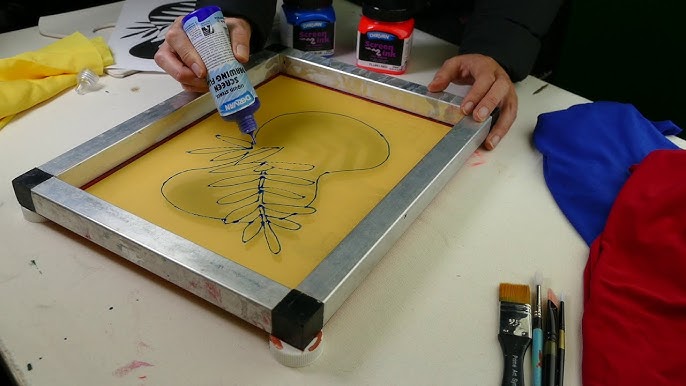ChatGPT said: The everything explained to 10:9 Design Screen Printing Texas
The Necessary Guide to Recognizing Screen Printing and Its Versatile Utilizes
Screen printing has a rich history that dates back to old times, evolving right into an innovative strategy used throughout numerous industries today. This overview discovers the details of the screen printing procedure, detailing its applications in home, marketing, and style design - 10:9 Design Embroidery. Comprehending these principles can open imaginative possibility for both artistic and industrial jobs. The adhering to areas will expose vital tips and strategies to enhance one's screen printing ventures
The History of Screen Printing
Screen printing has roots that trace back centuries, its evolution mirrors the creative and technological developments of various societies. Coming from old China, the technique was initially made use of for embellishing textiles and later infect Japan, where it became essential to Ukiyo-e woodblock printing. The method changed to Europe in the 18th century, where it got appeal among artisans and business printers. The invention of photo emulsion in the 20th century changed screen printing, permitting more elaborate layouts and better performance. Artists like Andy Warhol even more thrust its appeal, using the medium to create famous works that combined commercialism and great art. By the late 20th century, screen printing had actually established itself as a flexible strategy, used in style, advertising and marketing, and art. Today, it proceeds to progress, incorporating digital technology and increasing its applications throughout different markets.
The Screen Printing Refine Explained
Screen printing transforms artistic visions into tangible designs through a collection of precise steps. A picture is developed and then transferred onto a screen, typically made of great mesh material stretched over a structure. A light-sensitive emulsion is put on the screen, which is exposed to light, setting in areas not covered by the picture. After washing out the unhardened solution, a pattern is formed.
Next off, the screen is placed over the substrate, whether it be textile, paper, or another material. Ink is after that pushed through the open areas of the stencil utilizing a squeegee, depositing the layout onto the substrate listed below. This procedure can be duplicated for multiple shades, requiring separate displays for each hue. The published product is treated using warmth to ensure the ink adheres properly, resulting in a long lasting, lively design ready for usage.
Kinds Of Screen Printing Techniques
.png)
Furthermore, specialty strategies, such as discharge screen printing, get rid of dye from the textile to create softer prints, while foil screen printing applies metallic aluminum foil to accomplish a shiny finish (10:9 Design Screen Printing). Each method uses distinct qualities, dealing with different innovative requirements and manufacturing scales, inevitably expanding the possibilities within the screen printing domain
Applications of Screen Printing in Various Industries

Additionally, the signage and marketing industries make use of screen printing for developing captivating displays and banners. This method enables for vibrant colors and intricate designs that record attention. In electronic devices, screen printing is used for using conductive inks to motherboard, essential for part connections. Furthermore, the home design market welcomes screen printing to generate distinctive layouts on textiles and wall art. Overall, screen printing functions as an important tool throughout varied fields, enhancing items with individualized and aesthetically enticing graphics.
Tips for Effective Screen Printing Projects
While carrying out a screen printing project, cautious attention to information can substantially enhance the last end result. Selecting high-quality products is crucial; this includes the screen, inks, and substratums. Using proper mesh counts can affect ink deposition and information resolution. Preparation is just as important; comprehensive cleansing of screens and correct exposure times assure crisp prints.
Next off, accurate registration is critical for multi-color prints. Using alignment devices can assist achieve accurate layering. Furthermore, testing prints on scrap materials before production helps determine possible concerns without throwing away resources.

Regularly Asked Concerns
What Materials Are Ideal for Screen Printing on Material?
Cotton and polyester blends are perfect for screen printing on fabric due to their resilience and ink absorption. Furthermore, specialized textiles like silk or canvas can create special textures and finishes, enhancing the general layout top quality.
Just how Do I Clean and Maintain Screen Printing Equipment?
To keep and clean up screen printing tools, one ought to frequently clean screens with ideal solvents, inspect squeegees for wear, oil moving components, and store all items in a dry, dust-free setting to prolong their life expectancy.
What Are the Ecological Effects of Screen Printing?
Screen printing can have significant ecological effects, consisting of chemical waste from inks and solvents, water usage during cleaning processes, and energy consumption. Sustainable techniques and green materials are necessary for decreasing these unfavorable results.
Can Screen Printing Be Done in the house Efficiently?
Screen printing can be properly done at home with the right products and techniques. Enthusiasts can create quality prints, though success relies on their ability degree, tools, and understanding of the process included.
What Are the Costs Related To Beginning a Display Printing Business?

Starting a screen printing company entails prices for equipment, materials, and workspace. Initial costs normally range from a couple of hundred to several thousand bucks, depending on the scale, high quality of machinery, and desired production capacity.
Screen printing has a rich history that dates back to ancient times, advancing into an innovative method made use of across different markets today. Another method, rotating screen printing, uses round displays, helping with continuous printing on material rolls, thereby improving website performance for large-scale manufacturings. Additionally, specialty methods, such as discharge screen printing, eliminate dye from the textile to create softer prints, while foil screen printing applies metal aluminum foil to accomplish a glossy surface. In the style field, screen printing is extensively made use of to produce dynamic styles on apparel, enabling brand names to display their special designs. Cotton and polyester blends are perfect for screen printing on textile due to their resilience and ink absorption.